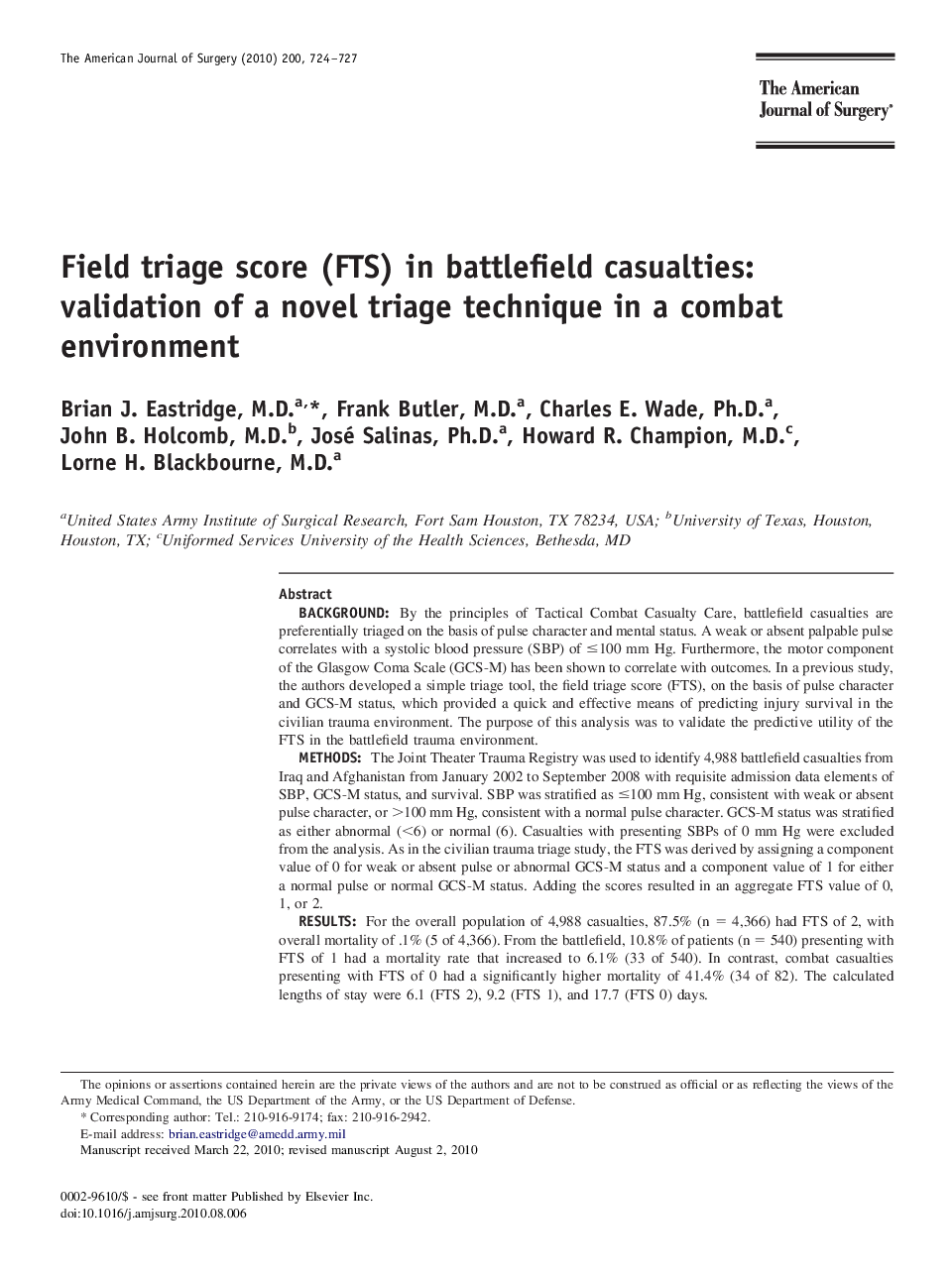| کد مقاله | کد نشریه | سال انتشار | مقاله انگلیسی | نسخه تمام متن |
|---|---|---|---|---|
| 4279917 | 1611548 | 2010 | 4 صفحه PDF | دانلود رایگان |

BackgroundBy the principles of Tactical Combat Casualty Care, battlefield casualties are preferentially triaged on the basis of pulse character and mental status. A weak or absent palpable pulse correlates with a systolic blood pressure (SBP) of ≤100 mm Hg. Furthermore, the motor component of the Glasgow Coma Scale (GCS-M) has been shown to correlate with outcomes. In a previous study, the authors developed a simple triage tool, the field triage score (FTS), on the basis of pulse character and GCS-M status, which provided a quick and effective means of predicting injury survival in the civilian trauma environment. The purpose of this analysis was to validate the predictive utility of the FTS in the battlefield trauma environment.MethodsThe Joint Theater Trauma Registry was used to identify 4,988 battlefield casualties from Iraq and Afghanistan from January 2002 to September 2008 with requisite admission data elements of SBP, GCS-M status, and survival. SBP was stratified as ≤100 mm Hg, consistent with weak or absent pulse character, or >100 mm Hg, consistent with a normal pulse character. GCS-M status was stratified as either abnormal (<6) or normal (6). Casualties with presenting SBPs of 0 mm Hg were excluded from the analysis. As in the civilian trauma triage study, the FTS was derived by assigning a component value of 0 for weak or absent pulse or abnormal GCS-M status and a component value of 1 for either a normal pulse or normal GCS-M status. Adding the scores resulted in an aggregate FTS value of 0, 1, or 2.ResultsFor the overall population of 4,988 casualties, 87.5% (n = 4,366) had FTS of 2, with overall mortality of .1% (5 of 4,366). From the battlefield, 10.8% of patients (n = 540) presenting with FTS of 1 had a mortality rate that increased to 6.1% (33 of 540). In contrast, combat casualties presenting with FTS of 0 had a significantly higher mortality of 41.4% (34 of 82). The calculated lengths of stay were 6.1 (FTS 2), 9.2 (FTS 1), and 17.7 (FTS 0) days.ConclusionThis study has validated the utility of the FTS as a simple and practical triage instrument for use in the battlefield environment. Using the FTS, medics and medical providers will have a quick and effective measure to predict high-acuity combat casualties to triage evacuation and medical resources in austere military environments. This technique may have potential implications for domestic or foreign disaster or mass casualty situations in which supplies, medical resources, and facilities are limited.
Journal: The American Journal of Surgery - Volume 200, Issue 6, December 2010, Pages 724–727